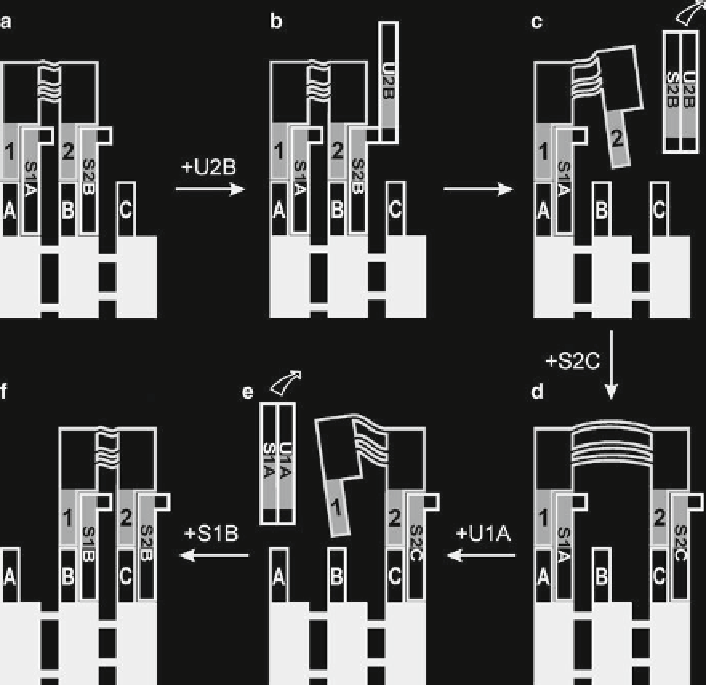Biomedical Engineering Reference
In-Depth Information
Fig. 10
Cartoon representation of a full step of a DNA biped walking device
can be removed from the solution. The operation of the biped is illustrated in Fig.
10
.
At the beginning (a), the strand set S1A links the foothold A with the foot 1, and the
set strand S2B links the foothold B with the foot 2. The fi rst step consists of releas-
ing the foot 2 from the foothold B, which is obtained by introducing in the solution
the unset strand U2B which binds to the toehold of S2B (b) followed by branch
migration that results in the complete hybridization of S2B with U2B (c). Once the
foot 2 has been freed from the foothold B, it is free to be set to the foothold C by the
appropriate set strand S2C (d). At this stage, the foot 1 can be freed from the foot-
hold A by the appropriate unset strand U1A (e) and set to the foothold B by the
appropriate set strand S1B (f). The state of the system is observed by taking an ali-
quot of the solution and exposing it to UV light that causes a crosslink reaction.
Subsequent analysis by denaturation allows to establish which feet were attached to
which footholds. Because of the relatively short lengths of the fl exible linkers that
connect the two legs, the biped moves by an “inchworm” mechanism.

